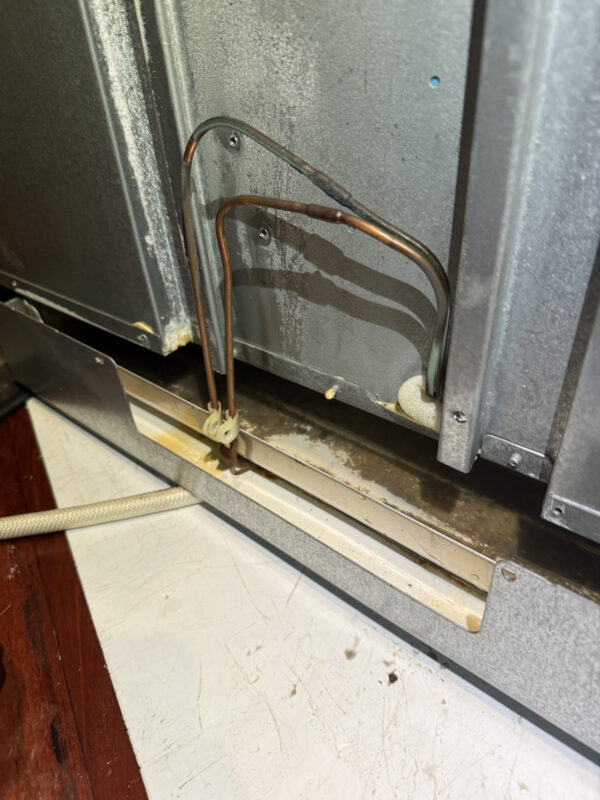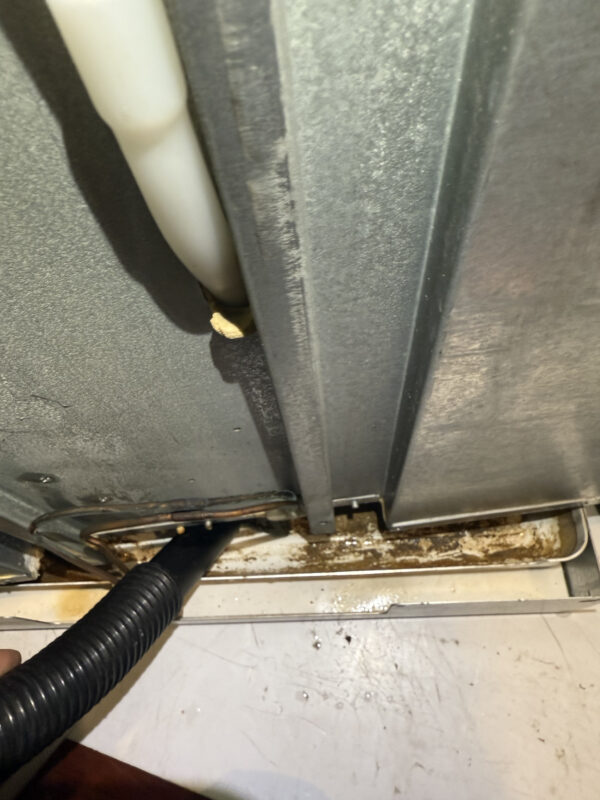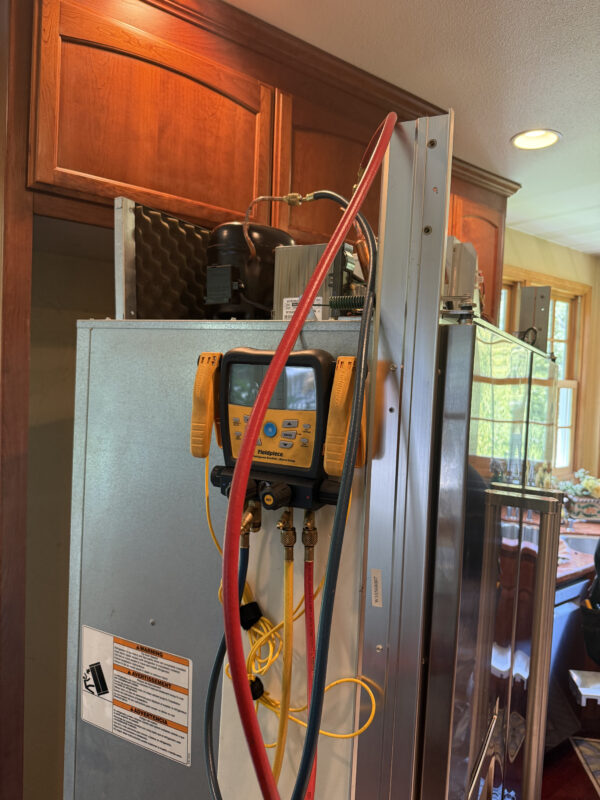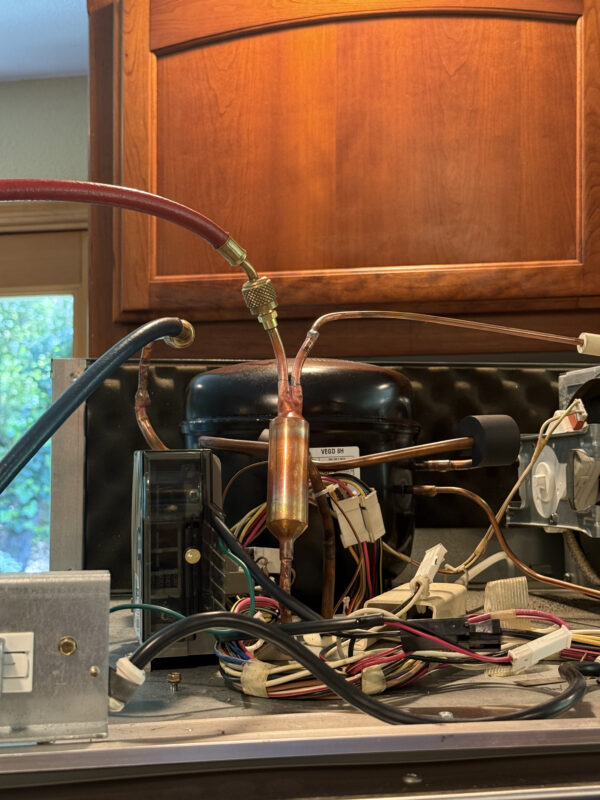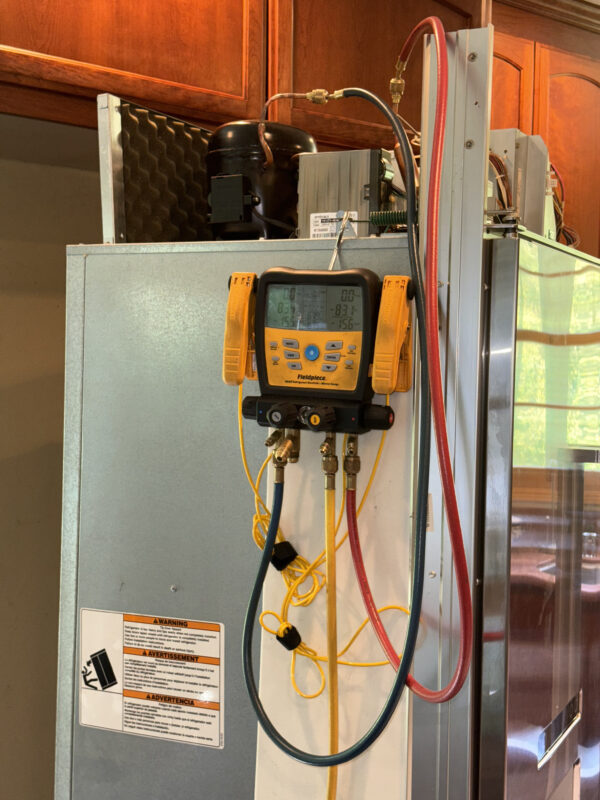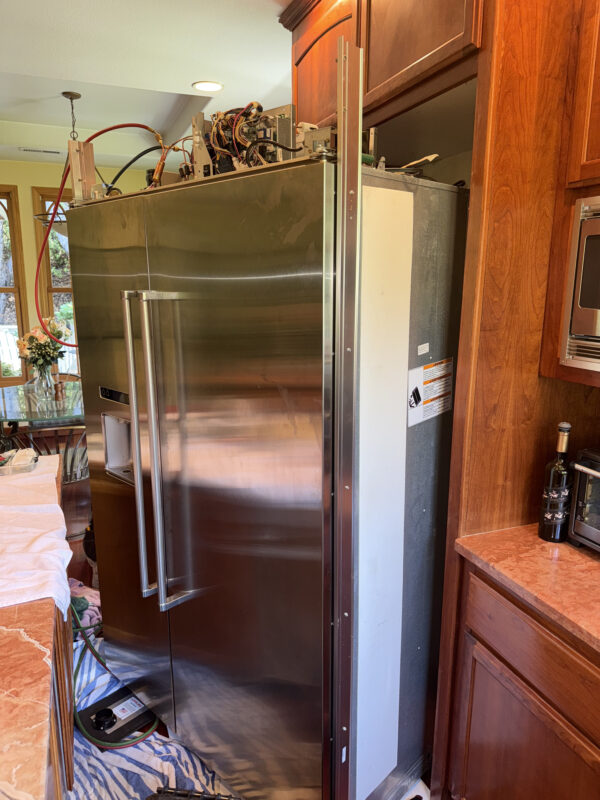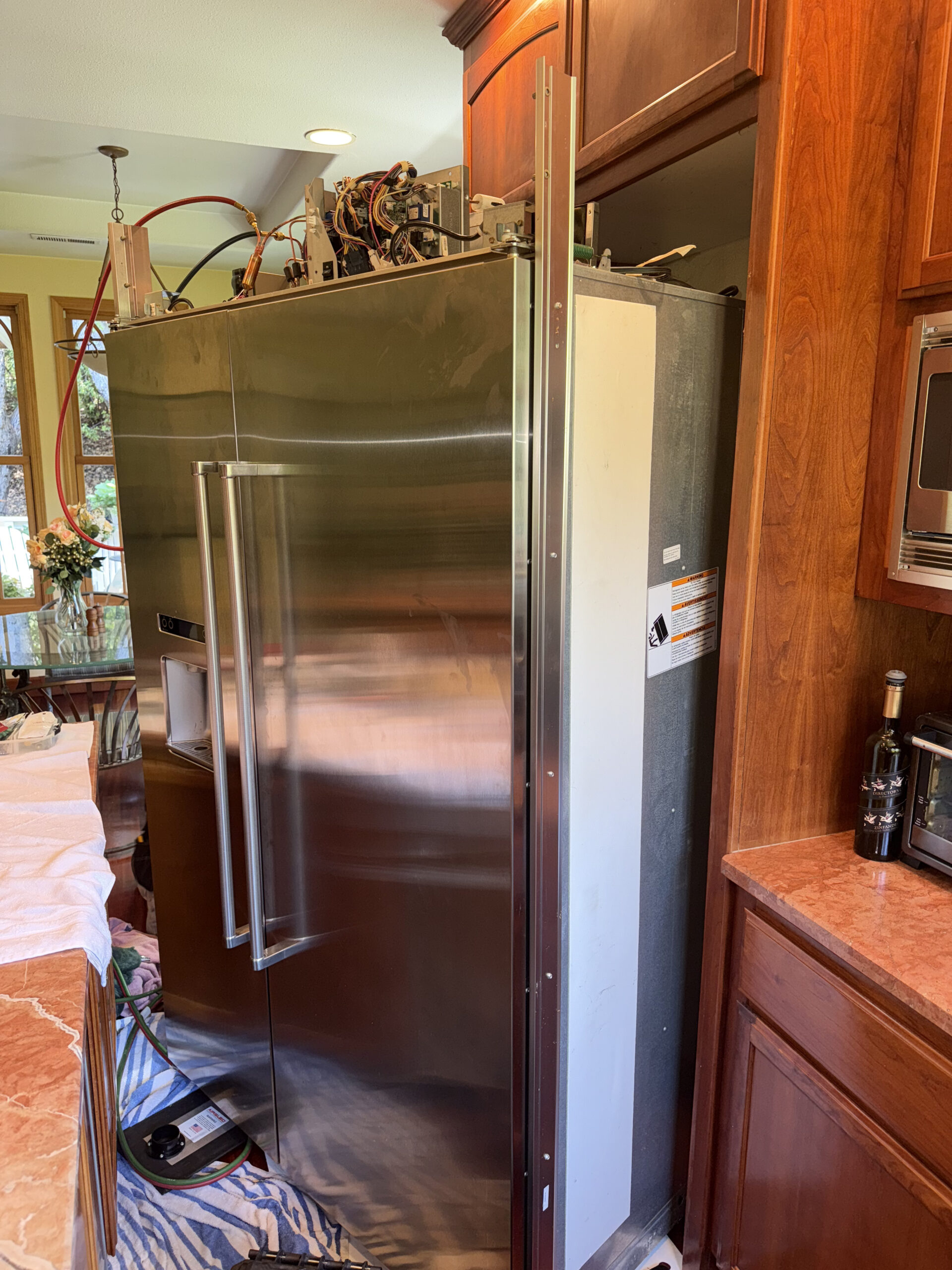The Problem
The first issue was inside the sealed system — the refrigerant wasn’t circulating correctly because of a small leak in the evaporator coil. That’s why the unit wasn’t cooling.
The second issue was water leaking underneath. The drain tubes that normally carry defrost water to the drain pan were clogged and not drying properly, so the melted water from defrost cycles had nowhere to go and started building up under the unit.
It’s something I see a lot on Thermador refrigerators — once the cooling gets weak, the defrost system doesn’t evaporate moisture efficiently, and that leads to standing water or even rust around the drain pan.
The Fix
First, I pressure-tested the sealed system with nitrogen and confirmed a leak at the evaporator coil. After recovering the old refrigerant, I replaced:
-
The evaporator coil
-
The filter-drier
-
Added a service valve for proper charging and future maintenance
Then I flushed the system with dry nitrogen, pulled a deep vacuum to 500 microns, and recharged it with the factory-specified refrigerant.
After that, I cleaned the drain system — cleared the drain tube, dried out the insulation, and made sure water could flow freely into the drain pan again.
Once the repair was done, the fridge started cooling like new — full frost pattern, 0 °F in the freezer, and no more leaking water underneath.
Why It Happened
The sealed system leak caused weak cooling, which in turn prevented the defrost heater from evaporating moisture properly. Over time, water collected in the drain area and overflowed the pan. The drain line was also partially clogged, so the water had no place to go.
It’s a chain reaction: a small leak → poor cooling → incomplete defrost → standing water.
Takeaway
If your Thermador refrigerator isn’t cooling and you notice water at the bottom, it’s not just a drain issue — the two are often connected.
A proper sealed system repair and drain cleaning can bring the unit back to life and prevent future leaks.
